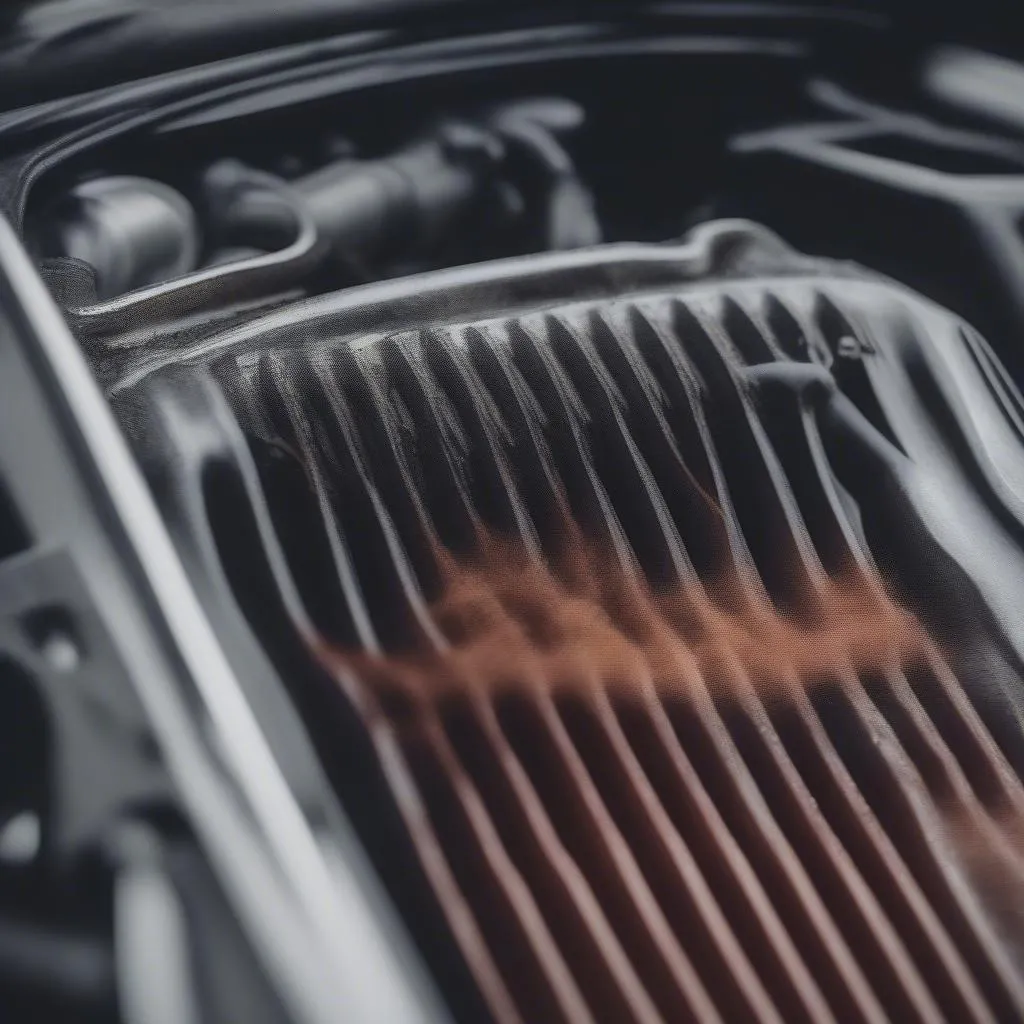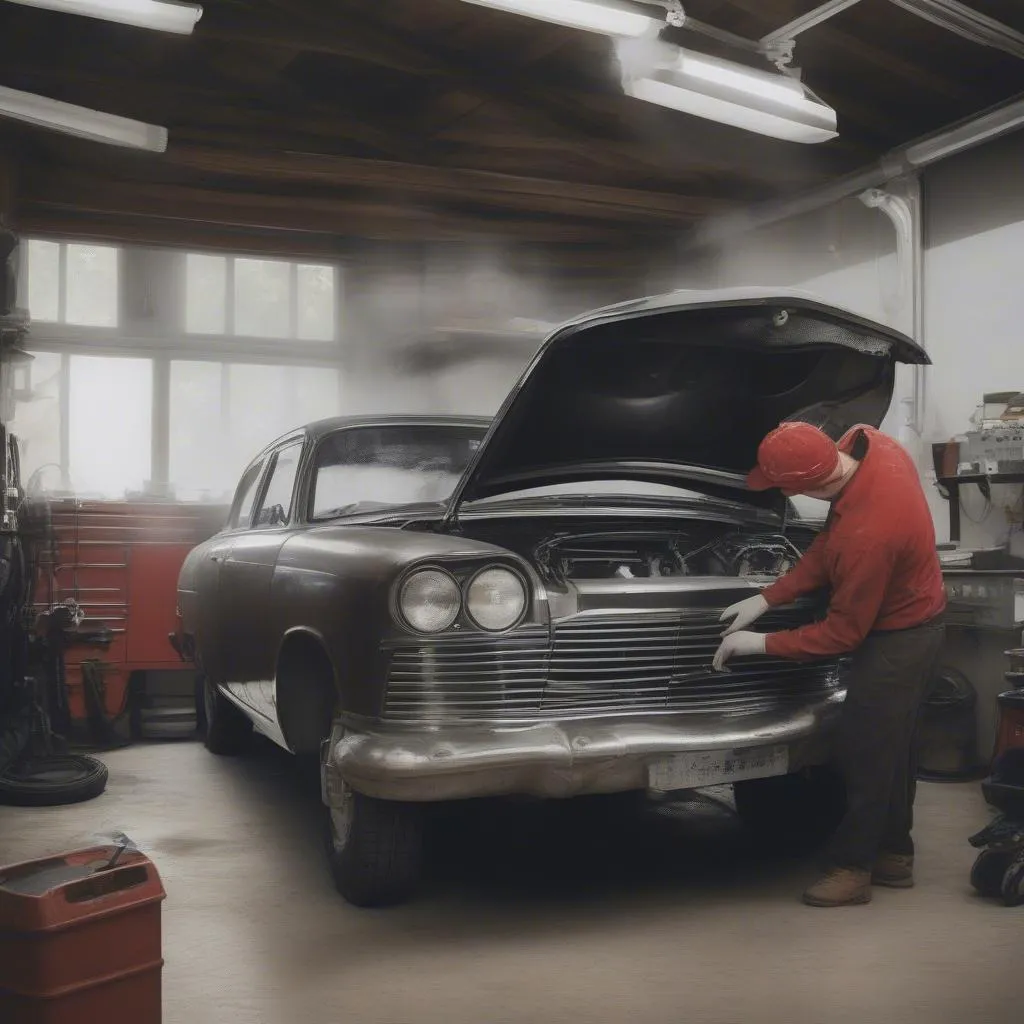Ever driven down the road and noticed steam rising from your car’s hood? It’s a scary sight, especially if you’re not sure what’s going on. But before you panic, it’s important to understand that “car steaming” isn’t always a sign of a major problem.
What Does Car Steaming Mean?
“Car steaming” usually refers to visible water vapor coming from your car’s engine compartment. This can be caused by a number of things, but the most common reason is simply condensation. When your engine is hot, it releases water vapor as a byproduct of combustion. This vapor can then condense on cooler surfaces in the engine compartment, like the radiator or hoses, and appear as steam.
Car Steaming: From a Mechanic’s Perspective
As a mechanic specializing in European car diagnostics, I’ve encountered numerous instances of car steaming. While condensation is often the culprit, I can’t emphasize enough the importance of addressing the root cause of steaming, especially if it persists or accompanies other symptoms like overheating.
Car Steaming: A Technical Perspective
From a technical standpoint, the process of steaming is a natural consequence of the internal combustion engine. Water is a byproduct of combustion, and when the engine is hot, this water vapor escapes through various outlets like the exhaust system or the radiator cap.
When Car Steaming Is a Concern
While steaming is often harmless, there are instances where it could indicate a more serious problem. Here’s when you need to be extra cautious:
- Steaming accompanied by overheating: If your car is steaming and the temperature gauge is also showing a high reading, this is a clear sign of an issue with the cooling system.
- Excessive steaming: If you see large amounts of steam, particularly if it persists after the car has cooled down, this could signal a leak in the cooling system.
- Unusual color or odor: If the steam has a strange color (like a white or yellow tint) or a sweet smell, it could indicate a coolant leak or other problems in the cooling system.
Why Car Steaming Is NOT Always a Sign of Overheating
Many car owners fear that steaming equals overheating, leading to unnecessary panic and worry. However, condensation alone doesn’t indicate an engine overheating.
Think about it this way: You’ve probably noticed steam on a cold morning, particularly when you breathe or exhale. That steam is simply water vapor condensing in the cold air. Similarly, the steam you see coming from your car is often just condensed water vapor from the engine’s normal operation.
How to Determine the Cause of Car Steaming
If you see steam rising from your car’s hood, here’s what you can do:
- Check the temperature gauge: If the gauge is reading normal, there’s a high chance it’s just condensation.
- Wait for the car to cool down: Observe the amount of steam after the engine has cooled down. If it’s minimal or disappears completely, it’s likely just condensation.
- Inspect for leaks: Carefully examine the engine compartment for any signs of leaks, particularly around the radiator, hoses, and water pump.
- Contact a mechanic: If you notice any unusual symptoms or are unsure about the cause of the steaming, it’s always best to consult a mechanic.
Frequently Asked Questions About Car Steaming
Here are some of the most common questions I get about car steaming:
Is it normal for my car to steam?
It’s completely normal for cars to steam, especially after a long drive or in cold weather. This is due to condensation forming in the engine compartment.
What causes car steaming?
The most common cause of car steaming is condensation. The steam you see is simply water vapor from the engine’s operation condensing on cooler surfaces.
How can I tell if the steaming is normal or a sign of a problem?
Look for excessive steaming, steam with an unusual color or odor, or steaming accompanied by overheating. If you notice any of these, it’s best to consult a mechanic.
Is car steaming dangerous?
In most cases, car steaming is harmless and simply a sign of normal engine operation. However, if it’s accompanied by other symptoms like overheating, it could indicate a problem that needs to be addressed.
Common Causes of Car Steaming
In addition to condensation, here are some other possible causes of car steaming:
- Coolant leak: If you notice a sweet smell or green/yellow-tinted steam, this could indicate a coolant leak.
- Radiator cap issue: A faulty radiator cap can lead to pressure buildup in the cooling system, causing coolant to boil and release steam.
- Head gasket failure: A blown head gasket can allow coolant to leak into the combustion chamber, resulting in steam being released from the exhaust.
Conclusion
Car steaming can be a concerning sight, but it’s often just a sign of condensation. However, it’s important to pay attention to other symptoms, like overheating or unusual colors or smells. If you’re concerned about car steaming, it’s always best to have it checked by a qualified mechanic.
Don’t hesitate to contact us at Tech Car USA if you have any questions or need assistance with your European car diagnostics. We have a team of experienced mechanics available 24/7 to help you get back on the road safely.
 Car Steaming from Condensation
Car Steaming from Condensation
 Coolant Leak causing Car Steaming
Coolant Leak causing Car Steaming
 Mechanic Inspecting a Car
Mechanic Inspecting a Car